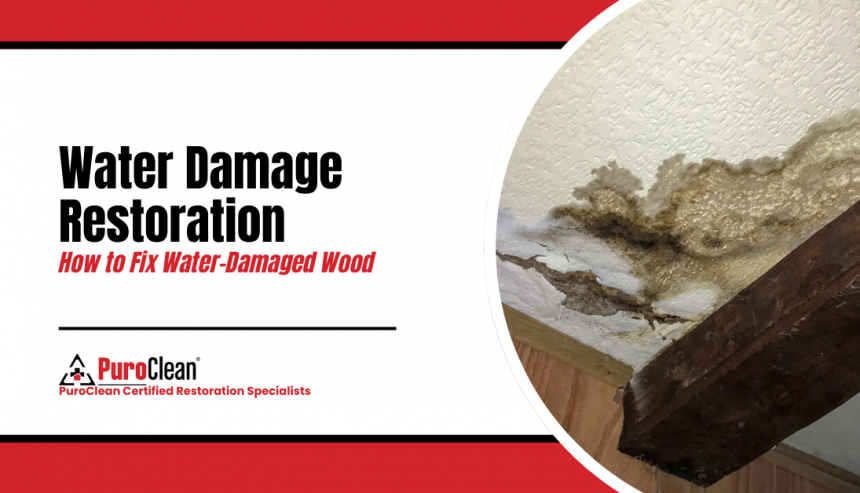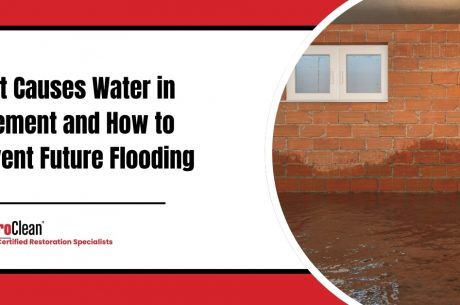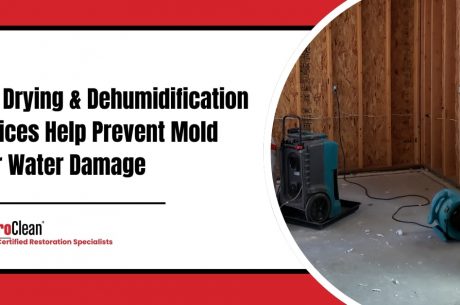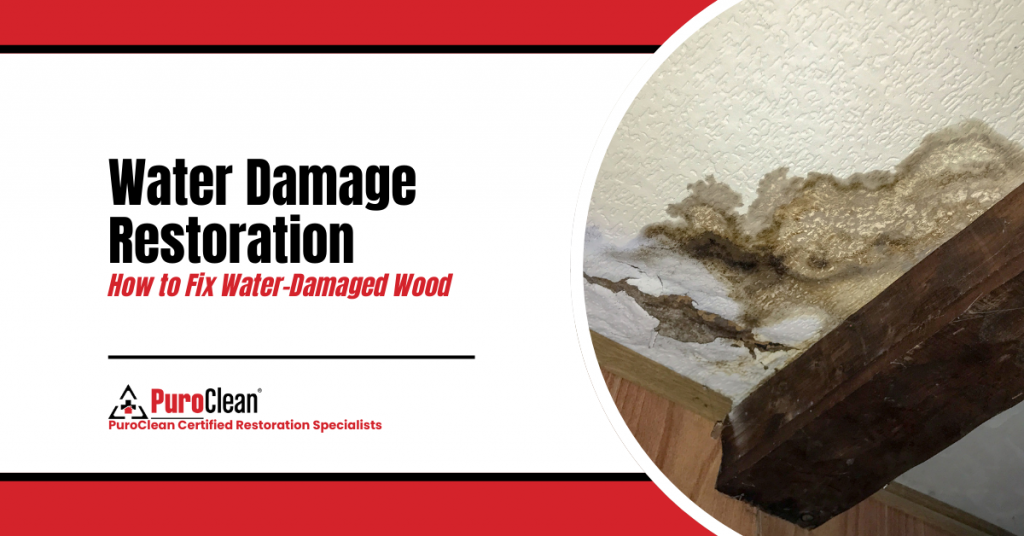
Key Takeaways
- Water-damaged wood shows signs like warping, swelling, discoloration, and sometimes a musty smell.
- Common causes of water damage include leaks, flooding, roof issues, high humidity, and broken appliances.
- Ignoring water damage can weaken wood, cause mold, attract pests, raise repair costs, and lower property value, so timely restoration is important.
- Restoring wood involves five steps: drying, removing mold, sanding, applying preservatives and sealants, and finishing or refinishing.
- Acting quickly and addressing the source of water is crucial to prevent further damage and extend the life of wood surfaces.
Wood is a beautiful and durable material, but when it gets exposed to water, it can quickly lose its strength and appearance. Whether it’s your hardwood floors, wooden furniture, or structural beams, water damage can cause warping, discoloration, and even mold growth. The good news is that many cases of water-damaged wood can be repaired with the right approach.
If your wood is wet or starting to warp, it’s important to act quickly. Water damage restoration in Zephyrhills can help protect your home and prevent more damage. In this blog, we’ll show you how to spot water-damaged wood, check how bad it is, and restore it so your floors, furniture, or beams look like new again. Let’s begin!
What Does Water-Damaged Wood Look Like?
Water-damaged wood usually shows clear signs that it needs attention. You might see warping, swelling, or buckling, where the wood no longer lies flat. The surface can have stains or discoloration, and sometimes there’s a musty smell. On wooden furniture, light watermarks mean the moisture is still on the surface, while heavier marks show the water has soaked through the finish.
Different types of wood react in different ways. Wood veneers may lift or bubble at glue joints, and engineered woods like MDF can crumble when wet. Wood can also swell, shift, or even grow mold if it stays damp. Knowing these signs early helps you fix the wood before the damage gets worse.ion.
Common Causes of Water Damage to Wood
Water damage can happen for many different reasons, and sometimes it takes you by surprise. Knowing the most common causes can help you spot problems early and protect your wood from future damage. Here are some of the main reasons wood gets damaged by water:
- Leaking pipes can slowly drip water onto wood, weakening it over time.
- Flooding from heavy rain can soak floors, furniture, and even wooden walls.
- Roof leaks allow water to seep into beams, ceilings, and wooden supports.
- High indoor humidity can cause wood to swell, warp, or grow mold.
- Broken appliances like washing machines, dishwashers, or water heaters may leak onto wooden floors or cabinets.
By understanding what causes water damage, you can take steps to prevent it and keep your wood strong and looking good.
Risks of Ignoring Water-Damaged Wood
When wood gets damaged by water, it may seem like just a cosmetic issue at first. But if you leave it untreated, the problem can quickly become much more serious. Water doesn’t just stain or warp wood; it can weaken its structure and create problems that spread to other parts of your home.
Here are some of the biggest risks of ignoring water-damaged wood:
- Weakened Structure
Wood loses its strength when it stays wet. Over time, it can bend, crack, or even break under pressure. This is especially dangerous if the damage affects wooden beams, floors, or other parts that support your home.
- Mold and Mildew Growth
Damp wood creates the perfect conditions for mold and mildew to grow. This not only weakens and damages the wood but can also lead to unpleasant odors and serious health effects of mold, including allergies, respiratory issues, infections, and other health concerns.
- Pests and Insects
Moist, weakened wood can attract termites, carpenter ants, and other pests that feed on or burrow into wood, causing even more destruction.
- Costly Repairs
What starts as a small patch of damage can spread quickly, which leads to bigger and more expensive repairs down the road.
- Decreased Property Value
Visible water damage makes a home look neglected. If you plan to sell, buyers may worry about hidden problems and lower their offers.
5-Step Restoration Process for Water-Damaged Wood
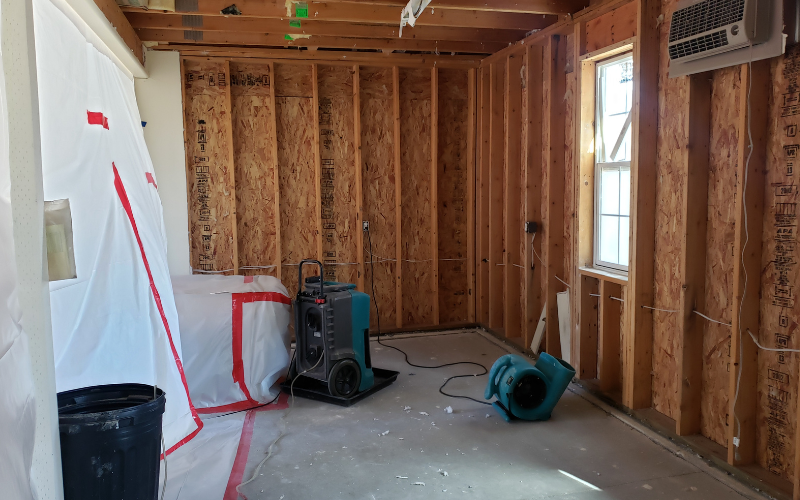
Restoring water-damaged wood may feel overwhelming, but breaking it down into simple steps makes the process much easier. Whether you’re dealing with damaged floors, furniture, or wooden structures, the key is to act quickly and carefully. Below are five important steps to help bring your wood back to life.
Step 1: Drying the Wood
The first and most important step in dealing with water-damaged wood is ensuring it is completely dry. Any remaining moisture can cause warping, mold growth, or structural weakening. Two key drying methods include:
- Air Drying: For minor cases, natural air circulation can help the wood dry out. Opening windows and improving airflow in the room can make a difference.
- Dehumidifiers and Air Movers: For more significant water damage, equipment like dehumidifiers and air movers is often used to remove moisture from the wood and surrounding air.
It is essential to make sure the wood is thoroughly dry before moving on to the next steps.
Step 2: Removing Mold and Mildew
Once the wood is dry, the next step is to tackle any mold or mildew that may have developed. Certified restoration specialists begin by assessing the affected areas and applying the right cleaning solutions to kill mold spores. Gentle scrubbing is used to remove visible mold while ensuring the wood’s surface is not damaged.
Proper ventilation is maintained throughout this process to help prevent mold from returning. Protective gear such as gloves, masks, and eye protection is also used to minimize exposure to spores. This careful approach ensures mold is safely removed and helps protect both the wood and indoor air quality.
Step 3: Sanding and Smoothing
Once the wood is fully dry and cleaned, it’s time to restore its surface. Sanding helps remove stains, smooth out raised areas, and prepare the wood for refinishing.
- Coarse Sandpaper (60–100 grit): Use a rougher grit first to take down warped or uneven spots caused by swelling.
- Fine Sandpaper (120–220 grit): Switch to finer grit sandpaper to achieve a smooth, even surface ready for sealing or staining.
Sanding helps smooth the wood and fix any uneven areas. It also prepares the surface so finishing treatments stick properly and the wood looks even and well-restored.
Step 4: Applying Wood Preservatives and Sealants
Wood is naturally vulnerable to moisture, so once it’s repaired, it’s important to add protection. This step ensures the restoration lasts and helps prevent future problems.
- Preservatives: Apply a wood preservative first. It penetrates deep into the fibers, protecting against mold, insects, and decay.
- Sealants: After the preservative dries, use a sealant such as polyurethane, varnish, or another water-resistant coating. This creates a strong surface barrier that blocks out moisture.
For best results, apply the products evenly with a brush or cloth and allow proper drying time between coats. A well-sealed surface is your wood’s best defense against future water damage.
Step 5: Finishing and Refinishing
The final step is restoring the wood’s beauty. Once the repairs are done, refinishing gives the wood a polished and renewed look.
- Staining or Painting: Choose a stain to enhance the natural color of the wood, or apply paint if you want a fresh new style.
- Clear Coating: After staining or painting, finish with a clear coat to protect the surface and give it a smooth, professional appearance.
This step not only makes the wood look brand new but also adds another layer of protection to extend its lifespan. By the end, your wood should look restored, feel smooth, and be ready to last for many more years.
Frequently Asked Questions
Is water damage on wood permanent?
Not always. Minor water damage, like small stains or light warping, can often be restored with drying, sanding, and refinishing. Severe damage, like deep rot or mold, may be permanent and require replacement.
Does water damage affect different types of wood differently?
Yes. Solid hardwood may warp or swell, veneer can bubble or lift, and engineered woods like MDF can crumble. Knowing your wood type helps determine the best restoration method.
Can water damage return after restoration?
Yes. If the original source of water isn’t fixed, restored wood can be damaged again by leaks, high humidity, or flooding. It’s important to address the cause to prevent future problems.
Does insurance cover water damage restoration?
It depends on your policy and the cause of the damage. Many homeowner’s insurance plans cover sudden and accidental water damage, like a burst pipe, but they may not cover gradual leaks or neglect. It’s always best to review your policy and contact your insurance provider for details.
Is it safe to leave slightly damp wood untreated?
No. Even if the damage looks minor, untreated moisture can slowly weaken the wood and encourage mold growth. It’s best to dry and seal the wood properly to avoid bigger problems later.
Can hardwood floors be saved after water damage?
In many cases, yes. If the water is cleaned up quickly and the floors are dried right away, hardwood can often be restored. Warped or buckled boards might need sanding or replacement, but professional restoration can save most water-damaged hardwood floors.
Conclusion
In a battle against water-damaged wood, knowledge and a methodical approach are paramount. This five-step guide equips individuals with the tools to revive and restore damaged wood, emphasizing assessment, strategic preparation, and systematic restoration. By embracing proactive measures and timely interventions, preserving the integrity and beauty of wooden structures becomes an achievable feat, ensuring their longevity and resilience against future water damage.
If you need help restoring your property after a water-related incident, contact us at Puroclean of Zephyrhills. We specialize in comprehensive water damage restoration solutions to quickly restore your space to its best condition.
